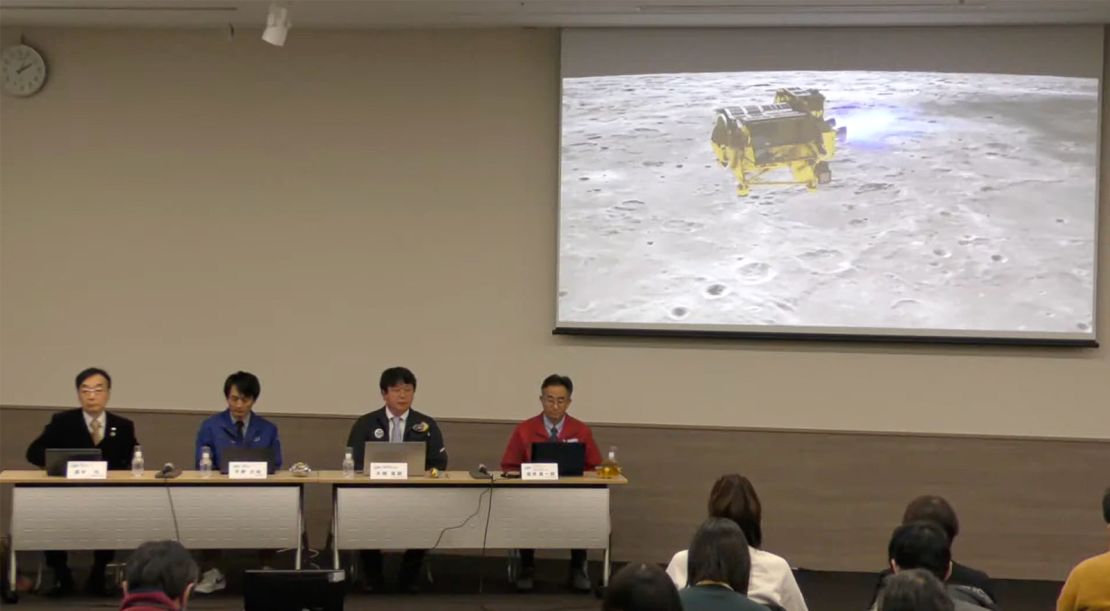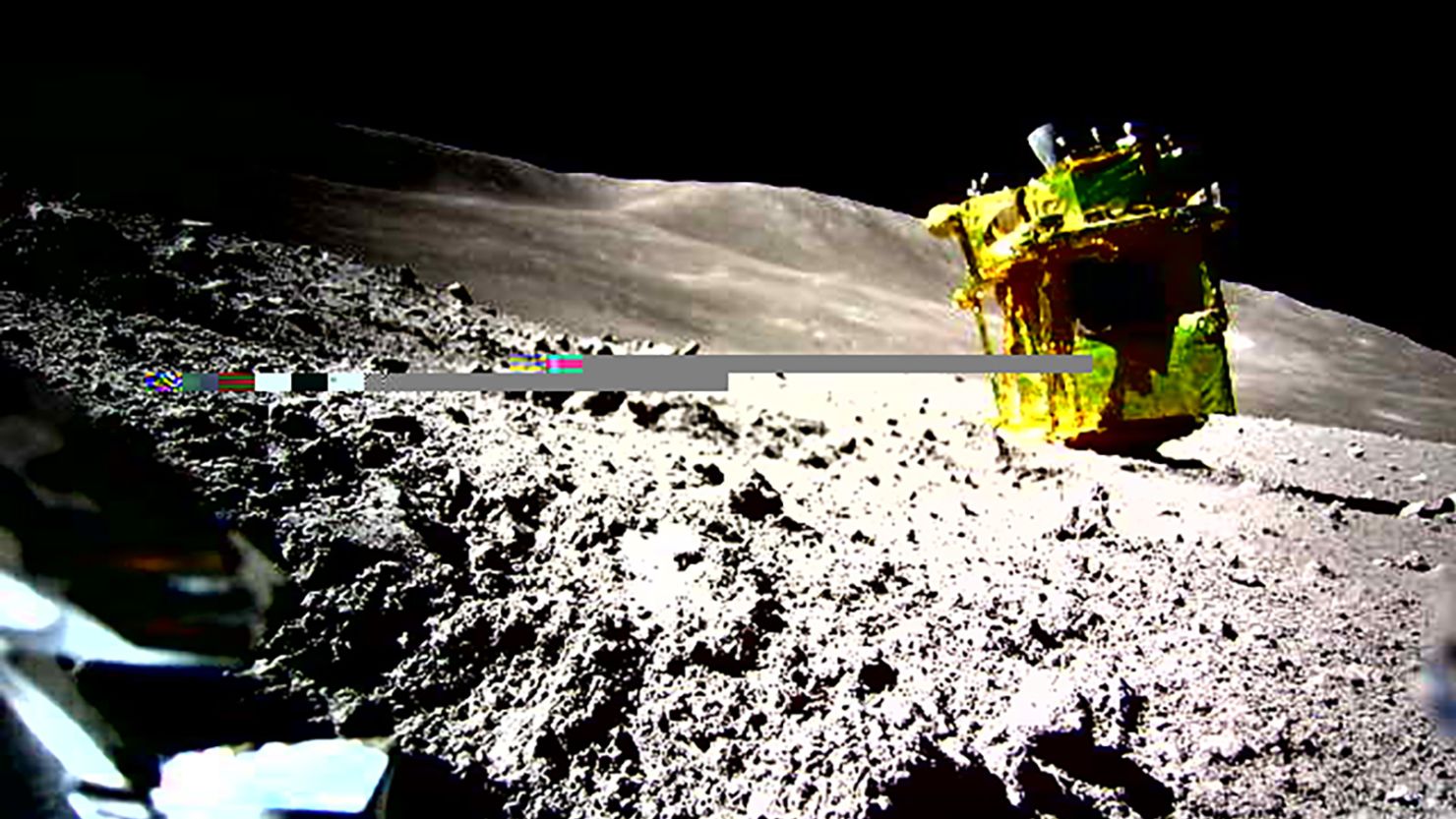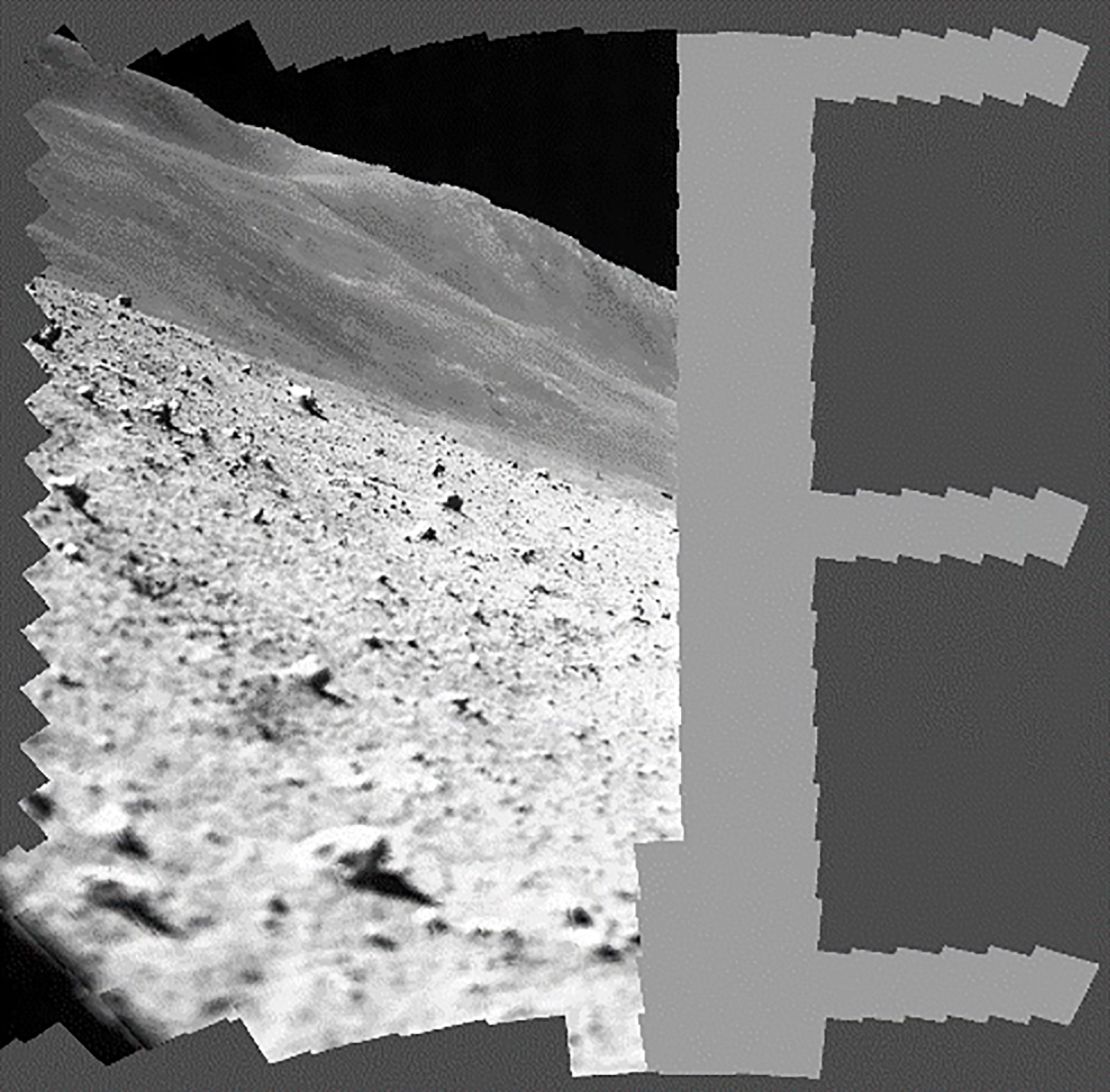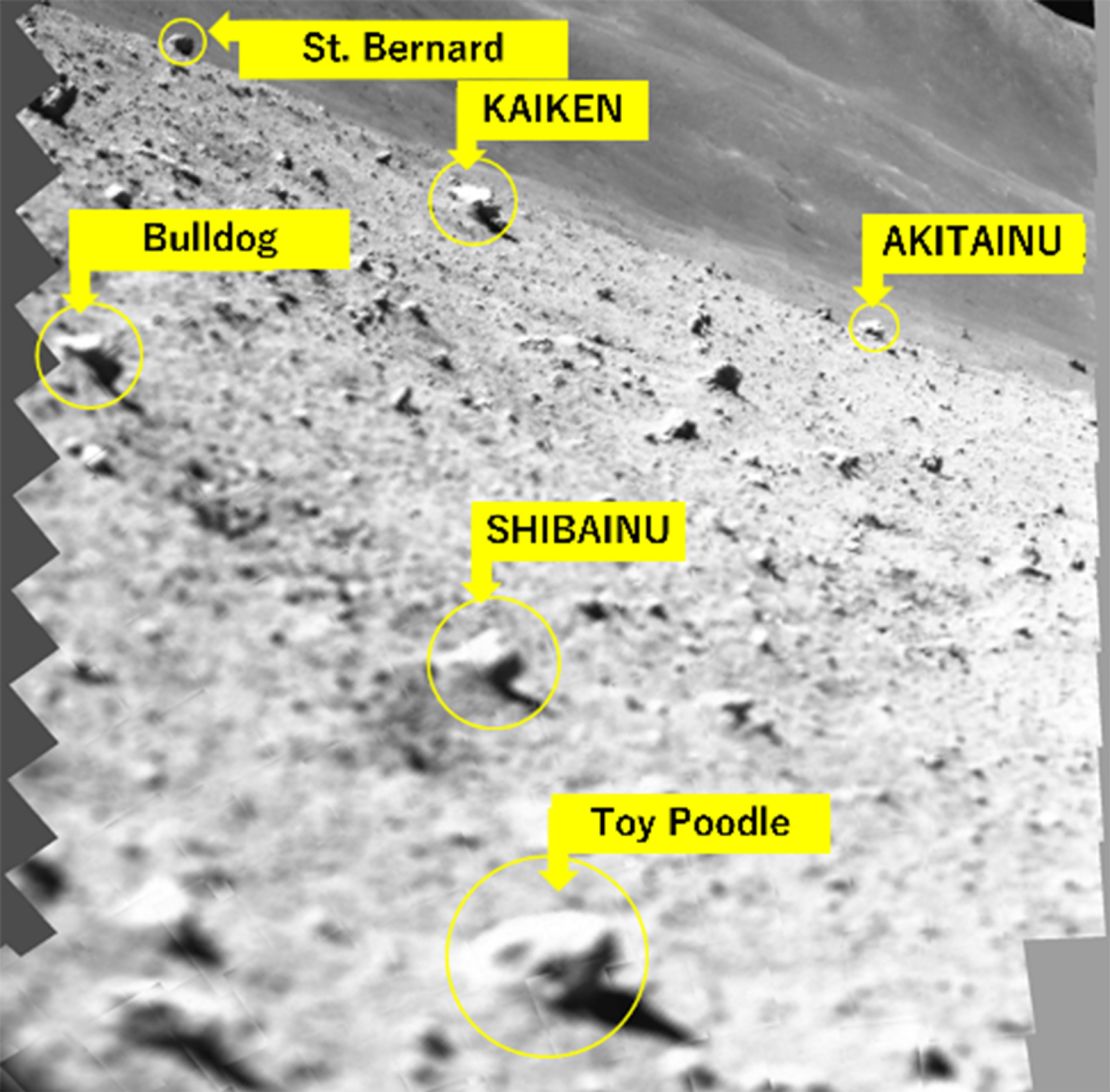Sign up for CNN’s Wonder Theory science newsletter. Explore the universe with news on fascinating discoveries, scientific advancements and more.
Japan’s space agency said Thursday that its “moon sniper” robotic explorer landed 55 meters (165 feet) from its target on the lunar surface last week, calling it a “significant achievement” despite problems during the landing that put the mission in jeopardy.
The Smart Lander for Investigating Moon, or SLIM, mission reached the moon’s surface just after 10:20 a.m. ET (12:20 a.m. Saturday Japan Standard Time) on January 19, according to data shared by the Japan Aerospace Exploration Agency.
During its descent, the spacecraft experienced “some kind of anomaly” at a distance of around 50 meters (165 feet) above the surface, JAXA officials said in a news conference. The thrust from one of the main engines was lost as a result, forcing the spacecraft to land on its nose with its “main engine facing upward and in an almost vertical position.”
Now, the spacecraft’s solar panels are facing west rather than upward as intended, forcing it to operate on limited battery power.
The lander’s battery has since been turned off to maintain spacecraft functionality, JAXA officials said. If the Moon Sniper can survive the frigid temperatures of lunar night, the space agency hopes light might reach the solar cells as the sun’s angle on the moon changes, potentially restoring power generation and allowing operations to resume.
Despite these challenges, the agency hailed the moment as “a significant achievement for future lunar and planetary exploration.” The SLIM explorer used new precision technology to demonstrate a “pinpoint” landing and successfully reached its goals of landing within 100 meters of its target.
The agency said Thursday it was able to communicate with SLIM after landing and released the first images transmitted by SLIM from the moon’s surface.
The lander used its multi-band camera to capture 257 low-resolution images of the lunar surface, which were combined to show the landscape surrounding SLIM. The mission team has analyzed the mosaic and given rocks of interest nicknames that correspond to their size estimates. If the lander turns on again, the team hopes to carry out more observations to learn about SLIM’s landing site, which is located on the slope of a crater in a lunar region called the Sea of Nectar.
University of Aizu associate professor Chikatoshi Honda participated in the development of the camera after the instrument team was established in 2016.
“Given that not all exploration programs necessarily result in data acquisition, we are thrilled to see that SLIM has borne fruit and captured something tangible on camera,” Honda said in a statement.

The touchdown made Japan the third country this century — and the fifth ever — to land on the moon.
JAXA said it is investigating the reasons for the anomaly during the landing and the loss of the main engine functionality. Space agency officials added that they hope the technology developed in SLIM can be applied to future space missions.
Rover achievements
Prior to landing, the SLIM mission achieved another milestone: Successfully releasing two lunar rovers, LEV-1 and LEV-2. The LEV-1 rover moves using a hopping mechanism and is equipped with wide-angle visible light cameras, scientific equipment and antennas that allow it to communicate with Earth. And LEV-2, also outfitted with cameras, can change shape to move across the lunar surface.
LEV-1 leaped across the lunar surface and directly communicated with ground stations on Earth using its antennas, including sending a test data transmission from LEV-2, also known as SORA-Q. But no images have been received from the rovers.
The LEV-1 rover completed its initial objectives after landing, depleted its power and is currently in standby mode on the lunar surface, much like the SLIM lander. The mission team is still listening out for signals from LEV-1, which won’t be able to wake up until solar power is generated. The status of LEV-2 is currently unclear.
Together, LEV-1 and LEV-2 have become Japan’s first lunar exploration robots, according to JAXA officials. LEV-1’s ability to communicate directly with Earth is “considered as the world’s smallest and lightest case of direct data transmission from approximately 380,000 kilometers (236,121 miles) away,” according to the agency. The rover weighs only 4.6 pounds (2.1 kilograms).
“Furthermore, the accomplishment of LEV-1’s leaping movements on the lunar surface, inter-robot communication between LEV-1 and LEV-2, and fully autonomous operations represent groundbreaking achievement,” according to a JAXA release. “It would be regarded as a valuable technology demonstration for future lunar explorations, and the acquired knowledge and experience will be applied in upcoming missions.”









